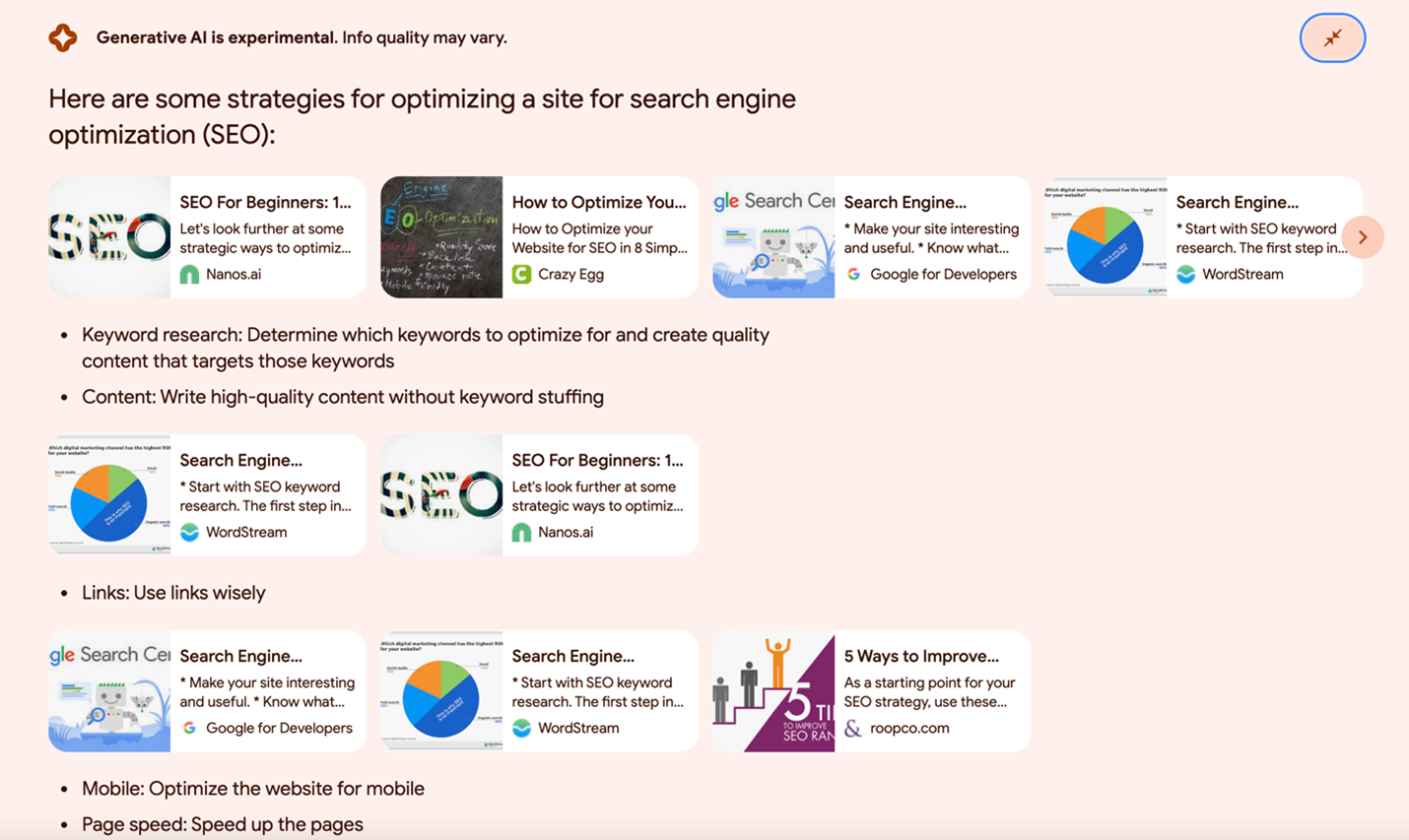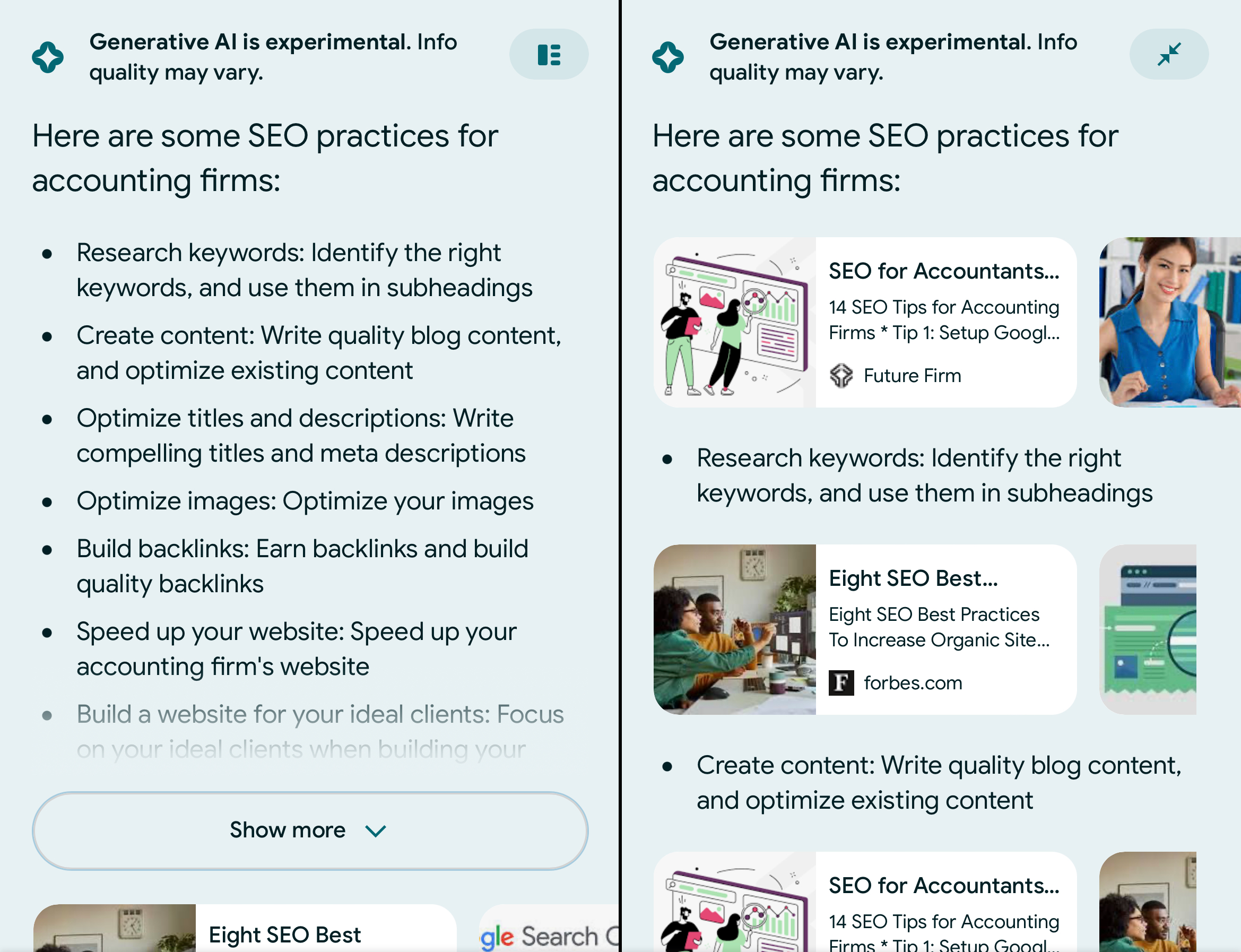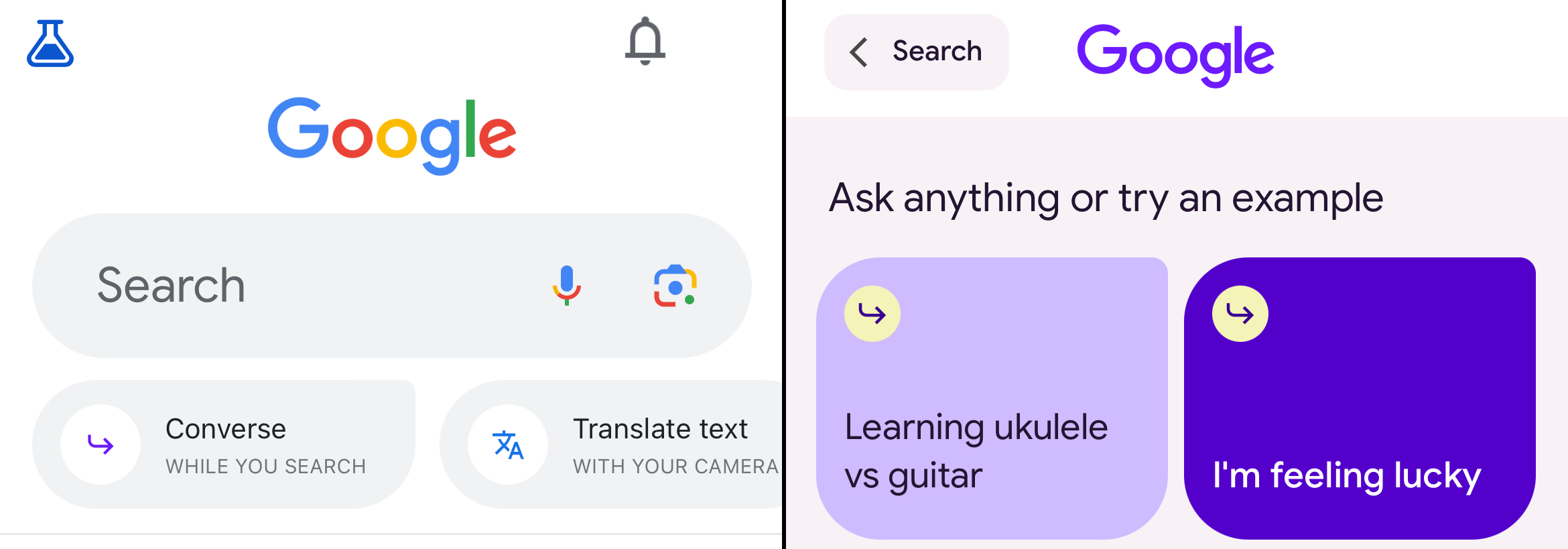SEO Guides, Tips & More!
Learn from Our ExperienceGoogle is putting generative AI in SERPS, what does it mean?
Google has already released a beta on its new AI technology on SERPS, and the implications are massive.
Many have already seen the rise of AI through things like CharGPT and integration in Bing, but did you know that Google started throwing their hat in the ring too? They just announced that it opened up what it calls SGE, or Search Generative Experience, through its new service Search Labs, which requires a waitlist to join. Let’s look firsthand at how it works and what it might mean for both Google and General SEO in the future.
How do I sign up for SGE?
Unfortunately, it is only available on a waitlist basis through a new program to test beta features known as Google Labs. Go to labs.withgoogle.com to sign up.

Scroll down to this part and simply click join waitlist. You will need to log in or be already logged in to use any Google Labs Feature.
How does SGE work?
Firstly, and most importantly, SGE places a section at the top of the search page.

This is noteworthy for SEO reasons as it could easily upset the balance of CTR with both sponsored and natural results. It offsets natural results, which in turn discourages actually clicking on links and visiting sites. Getting an answer with a few select webpages may divert attention from the SERP, and an AI response developed enough may divert leads entirely. The leftmost button just below the search bar is converse, and it allows the user to build a conversation with the AI over its initial search. The conversational ability makes it possible for someone to entirely avoid sites while still getting a thorough explanation of a topic.

This is the bottom section of the search page; SGE currently takes up a large chunk of the search page. Additional buttons are provided that suggest and lead to conversation with SGE, further encouraging AI over manual page search.
The sources chosen for the side-panel displaying results seem to be closely matched to what were already top results of the SERP, but picked differently from how Google normally ranks them, and placed equally instead of a top-to-bottom ranked list. It’s currently unclear how the determination of these sources differs from the main results. There is also an expand button in the corner near the results. Popping it out brings up this menu:

SGE builds out a listed response with sources backing up each point it makes. What the AI most likely doing here is pulling tiny snippets from each article listed above the point(s) and using them to build and verify information. Google has directly admitted in its informational PDF about SGE that the information present here can differ from and even contradict that of featured snippets as it considers an average of different results.
The Search Generative Experience on mobile and its differences
On mobile, the SGE features have notable differences in layout and in the content of results. I searched “Best SEO practices for CPA firms” and received these results:

The SGE layout on mobile takes up a similar amount of space as on PC and could equally disrupt existing CTR rates. The layout shifting is more pronounced on mobile as well due to the restricted horizontal space in portrait mode, which is typical for mobile users.

One thing mobile has which desktop does not is the converse tab on the home screen. This opens a page exclusive to mobile which offers various options, combined with a mobile-only “I’m feeling lucky” option. While there is no doubt Google would eventually want device parity, it’s an interesting look into how the company is currently prioritizing mobile implementation.
These two distinctions are the only noticeable differences between versions. Note that SGE features came through the Google app; Google through another app like Safari lacks SGE.
What to Consider
Will Google’s SGE feature end up using external data about users to identify their exact search needs? If so, would it make those users uncomfortable? Google will most likely avoid this, at least for right now. Nothing in their official announcement indicates this direction in development. But it is important to think about how user data could be used in the future to better the search experience, especially when it could make search results more accurate.
Let’s also consider AI bias. Every generative AI has a bias, and Google’s SGE is no different. If a bad actor wanted to use this bias to their advantage, they could unfairly boost search rankings within the SGE sources/results. SGE is trained on already high-ranking results, and therefore is biased in similar ways. Fortunately, Google is undoubtedly working on this issue while the beta is tested.
On a further note, since SGE does not source information based on exact ranking, information reliability is questionable. This is compounded by existing biases in Google rankings for misinformation in controversial searches, though Google avoids enabling results on those pages.
Implications for the Future
While the feature may seem uninteresting, digital marketers will quickly recognize how much of a shake-up a full implementation of SGE will bring. With how big the section and its results are, there’s no doubt that many sites will see an instant shift in search metrics. What changes might this bring about, and how can sites and SEO firms alike prepare? Let’s look:
- Answering preemptive questions. Since SGE is designed around using results as sources to answer a query, formatting content around that role will become incredibly important. SGE sourcing will start to account for a meaningful portion of CTR.
- Quality over quantity. Google has been trending towards emphasis on helpful, reliable, and people-first content for a while now. SGE will make this trend grow far stronger as sources from the response section depend on a highly rigid standard of both EAT and informational/writing quality.
- Personalized. Another thing that Google already achieves that will be strengthened is the tailoring of search results. The search engine already tracks search history, any profile or settings information, and information attained through Chrome to build a profile. It also employs context to give the most relevant results.
- AI Knows AI. Could AI tools end up being a reliable way to optimize for AI results? It’s interesting to consider, though more testing and research needs to be done.
In essence, AI may further the importance of some factors, and downplay others like keywords. Though these are only a few things it could change, it’s good to consider at a time well before its full implementation in 2024.
Conclusion
As Google iterates on its current version of SGE, there are important changes coming to the priorities of different SERP ranking factors; our average map of CTR for top results and snippets may get completely upended. Such a large change in an already ever-evolving SEO landscape leaves site owners with the choice to brace for the wave or to fail to anticipate and lose out in the process.
What’s clear is that generative AI is here to stay, whether it be through Google or through the use of things like ChatGPT. Digital marketers and their clients will need to overcome new obstacles, and aim for content with even more authority, quality, and relevance.
Reach Out
Planning for significant changes from Google is undoubtedly difficult. Contact our team at Flashpoint to help you with a game plan for these and other challenges in the digital marketing sphere.

